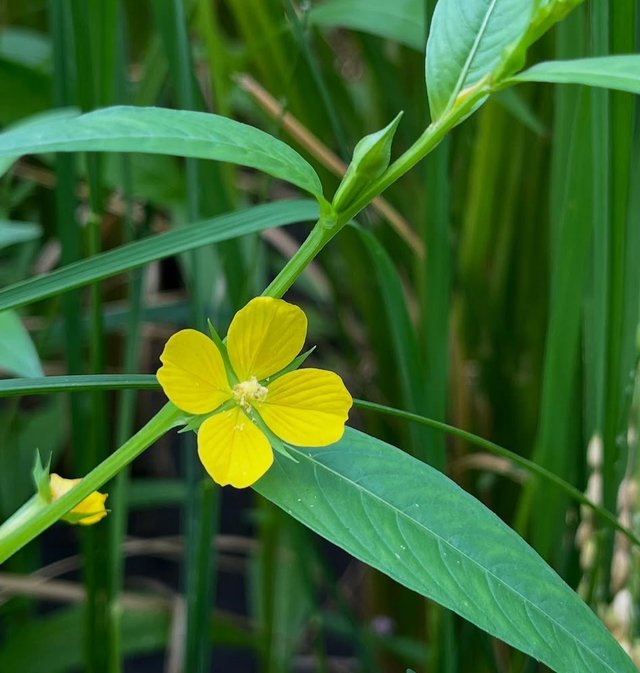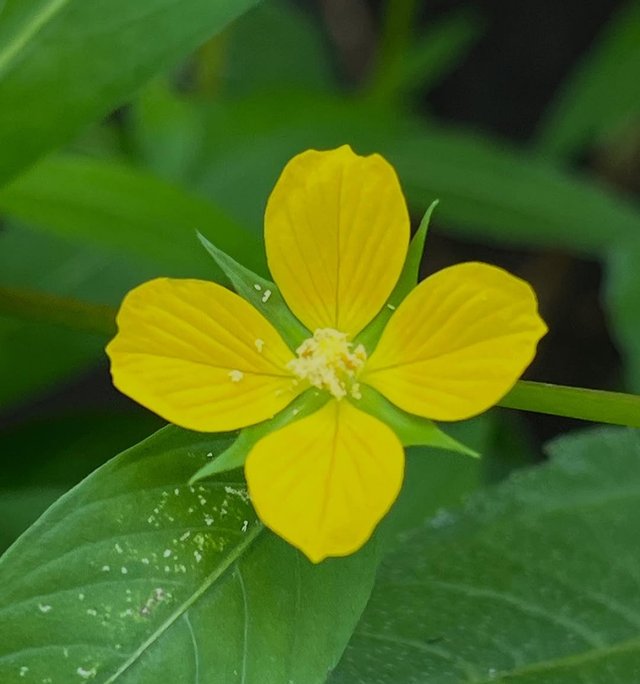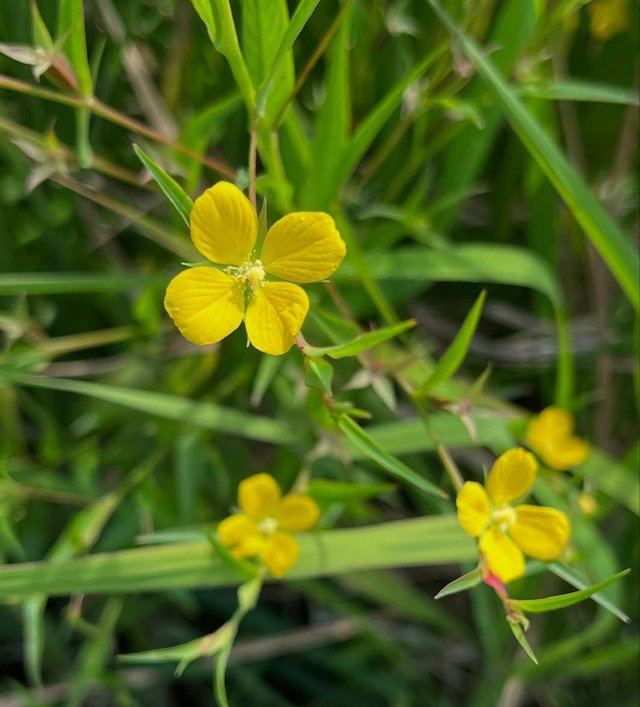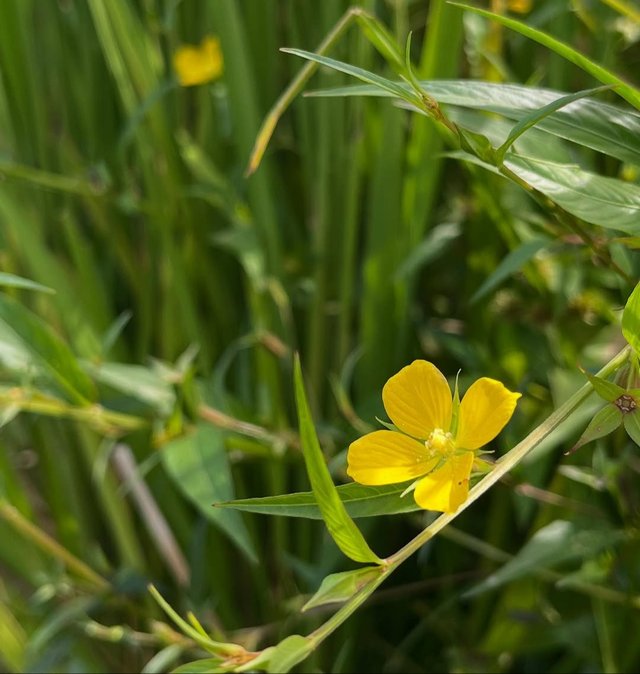Yellow Colour Ludwigia Decurrens Flower
Ludwigia decurrens, commonly known as wingleaf primrose-willow or willow primrose, is an aquatic or semi-aquatic plant that belongs to the evening primrose family, Onagraceae. This species is native to North America, particularly the southeastern United States, but it has also spread to other regions due to its adaptability and ornamental value. It thrives in wetlands, along riverbanks, in ditches, and in moist open areas, making it an important component of freshwater ecosystems.
Botanical Description
Ludwigia decurrens is an erect, perennial herbaceous plant that can grow up to 1.5 meters tall under favorable conditions. One of its most distinctive features is its decurrent leaves—a botanical term that means the base of the leaf extends downward along the stem, giving the plant its characteristic “winged” appearance. The leaves are lance-shaped to narrowly elliptic, and they are arranged alternately along the stem.
The plant produces bright yellow flowers with four petals, typically about 2–3 cm in diameter. These blossoms are visually striking and attract various pollinators, especially bees and butterflies. Flowering generally occurs in summer and early fall, when wetlands and pond margins are lush with vegetation. After pollination, Ludwigia decurrens develops elongated seed capsules filled with numerous small seeds, which are easily dispersed by water, aiding the plant’s colonization of new areas.




%20(7).jpeg)